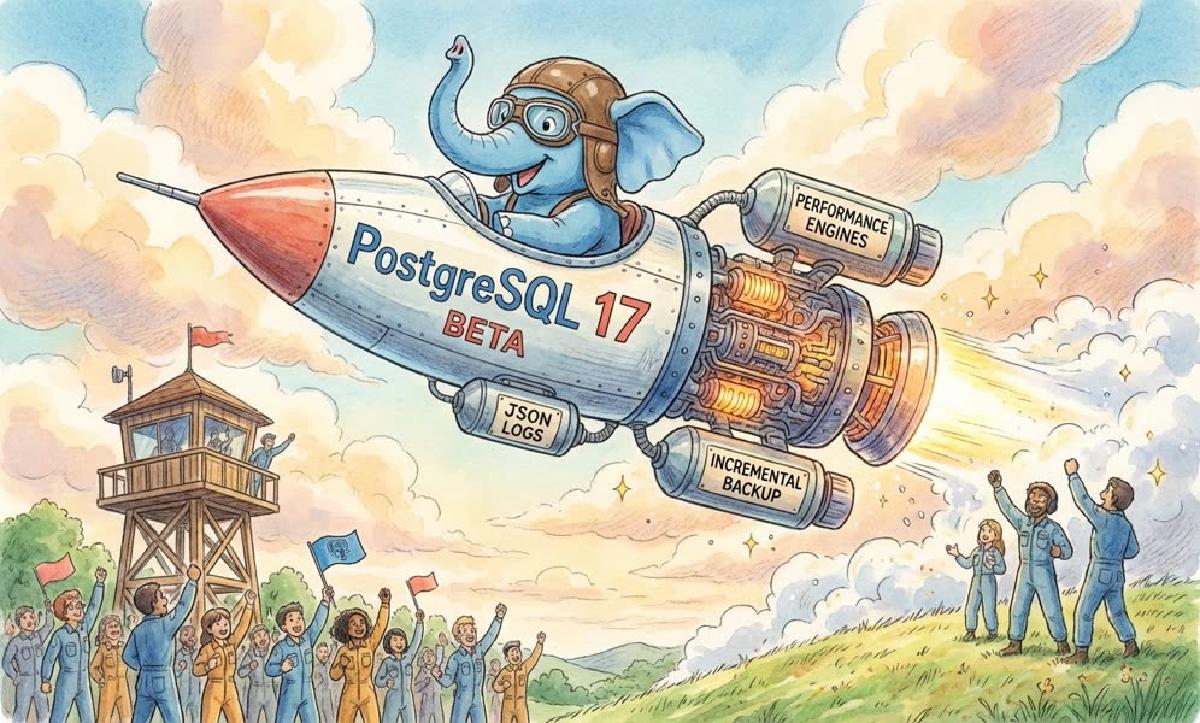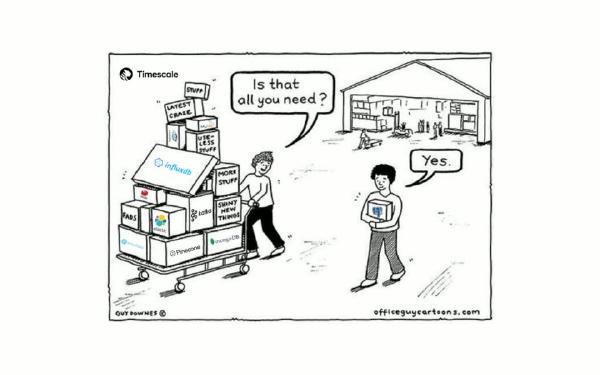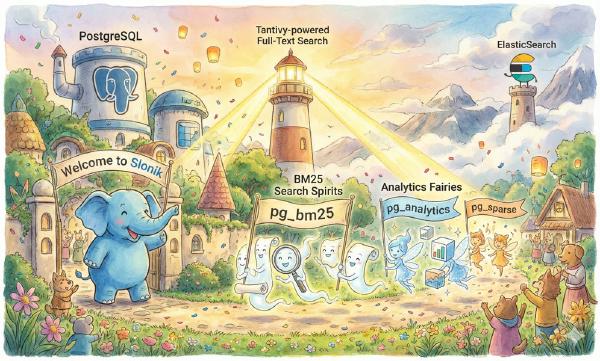The PostgreSQL Global Development Group announces that PostgreSQL 17’s first Beta version is now available for download. This version includes a preview of all features that will be available when PostgreSQL 17 is officially released, though some details may be adjusted during the Beta testing period.
You can find information about all features and changes in PostgreSQL 17 in the release notes:
https://www.postgresql.org/docs/17/release-17.html
In keeping with the PostgreSQL open-source community spirit, we strongly encourage you to test PostgreSQL 17’s new features on your systems, helping us discover and fix potential bugs or other issues. While we don’t recommend running PostgreSQL 17 Beta 1 in production environments, we hope you’ll run this Beta version in test environments and simulate your actual workloads as closely as possible.
The community will continue to ensure PostgreSQL 17’s stability and reliability as the world’s most advanced open-source relational database, but this depends on your testing and feedback. For details, please refer to our Beta testing process and how you can contribute: https://www.postgresql.org/developer/beta/
PostgreSQL 17 Highlight Features#
Query and Write Performance Improvements#
PostgreSQL 17’s recent builds continue the commitment to overall system performance optimization. PostgreSQL’s Vacuum process, responsible for reclaiming storage space, uses new internal data structures that reduce memory usage by up to 20x while decreasing execution time.
Additionally, the Vacuum process is no longer limited to 1GB memory usage, but is controlled by maintenance_work_mem, meaning you can allocate more resources to the Vacuum process.
This version introduces a streaming I/O interface that improves performance for sequential scans and running ANALYZE.
PostgreSQL 17 also adds configuration parameters to control the size of transaction, subtransaction, and multixact buffers.
PostgreSQL 17 can now leverage both planner statistics and the sort order in Common Table Expression (CTE) results (i.e., WITH queries) to further optimize these queries’ speed.
Additionally, this version significantly improves query execution time for queries with IN clauses when using B-tree indexes.
Starting with this version, for columns with NOT NULL constraints, PostgreSQL will directly optimize out redundant IS NOT NULL statements in queries. Similarly, queries with IS NULL will also be directly optimized. PostgreSQL 17 also supports parallel construction of BRIN indexes.
High-concurrency write workloads can significantly benefit from PostgreSQL 17’s write-ahead log (WAL) lock management improvements, with tests showing performance improvements up to two times higher.
Finally, PostgreSQL 17 adds more explicit SIMD instructions, such as enabling AVX-512 instruction support for the bit_count function.
Partitioning and Distributed Workload Enhancements#
PostgreSQL 17’s partition management is more flexible, adding the ability to split and merge partitions, and allowing partitioned tables to use identity columns and exclusion constraints.
Additionally, PostgreSQL foreign data wrapper (postgres_fdw) can now push down EXISTS and IN subqueries to remote servers, improving performance.
PostgreSQL 17 adds new functionality to logical replication, making it more usable in high-availability architectures and major version upgrades.
When upgrading from PostgreSQL 17 to higher versions using pg_upgrade, you no longer need to drop logical replication slots, avoiding the hassle of re-synchronizing data after upgrades.
Additionally, you can control the failover process of logical replication, providing better controllability for managing PostgreSQL in high-availability architectures. PostgreSQL 17 also allows logical replication subscribers to use hash indexes for lookups and introduces the pg_createsubscriber command-line tool for creating logical replication on physical replication standby servers.
Developer Experience#
PostgreSQL 17 continues to deepen support for the SQL/JSON standard, adding the JSON_TABLE feature that converts JSON to standard PostgreSQL tables, as well as SQL/JSON constructor functions (JSON, JSON_SCALAR, JSON_SERIALIZE) and query functions (JSON_EXISTS, JSON_QUERY, JSON_VALUE).
Notably, these features were originally planned for release in PostgreSQL 15 but were withdrawn during the Beta period due to design trade-off considerations — this is one reason we hope you’ll help test new features during the Beta period! Additionally, PostgreSQL 17 adds more functionality to jsonpath implementation, including the ability to convert JSON-typed values to various specific data types.
The MERGE command now supports the RETURNING clause, allowing you to further process modified rows in the same command.
You can also use the new merge_action function to see which part of the MERGE command was modified.
PostgreSQL 17 also allows using the MERGE command to update views and adds the WHEN NOT MATCHED BY SOURCE clause, allowing users to specify what actions to take when rows in the source have no matches.
The COPY command is used for efficiently bulk loading and exporting data from PostgreSQL. In PostgreSQL 17, performance when exporting large rows can be improved by up to two times.
Additionally, COPY performance is improved when source and target encodings match. COPY adds an ON_ERROR option that allows continuation even when insertion errors occur.
Additionally, in PostgreSQL 17, drivers can leverage the libpq API to use asynchronous and safer query cancellation methods.
PostgreSQL 17 introduces a built-in collation provider that provides sorting semantics similar to the C collation but encoded as UTF-8 rather than SQL_ASCII. This new collation provider provides immutability guarantees, ensuring your sorting results won’t change across different systems.
Security Features#
PostgreSQL 17 adds a new connection parameter sslnegotiation that allows PostgreSQL to perform direct TLS handshakes when using ALPN, reducing one network round trip. PostgreSQL registers as postgresql in the ALPN directory.
This version introduces new EventTrigger events — triggered when user authentication occurs. It also provides a new API called PQchangePassword in libpq that can automatically hash passwords on the client side to prevent accidentally logging plaintext passwords on the server.
PostgreSQL 17 adds a new predefined role called pg_maintain, granting users permission to execute VACUUM, ANALYZE, CLUSTER, REFRESH MATERIALIZED VIEW, REINDEX, and LOCK TABLE,
and ensures search_path is safe for maintenance operations like VACUUM, ANALYZE, CLUSTER, REFRESH MATERIALIZED VIEW, and INDEX.
Finally, users can now use ALTER SYSTEM to set undefined configuration parameters that the system doesn’t recognize.
Backup and Export Management#
PostgreSQL 17 can perform incremental backups using pg_basebackup and adds a new utility pg_combinebackup for combining backups during the recovery process.
This version adds a --filter parameter to pg_dump, allowing you to specify a file to further specify which objects to include or exclude during the dump process.
Monitoring#
The EXPLAIN command provides information about query plans and execution details. It now adds two options: SERIALIZE shows time spent serializing data for network transmission; MEMORY reports optimizer memory usage. Additionally, EXPLAIN can now show time spent on I/O block reads and writes.
PostgreSQL 17 standardizes CALL parameters in pg_stat_statements, reducing the number of records generated by frequently called stored procedures.
Additionally, VACUUM progress reporting now shows index garbage collection progress.
PostgreSQL 17 also introduces a new view, pg_wait_events, providing descriptions of wait events that can be used with pg_stat_activity to gain deeper insights into why active sessions are waiting.
Additionally, some information from the pg_stat_bgwriter view has now been split into the new pg_stat_checkpointer view.
Other Features#
PostgreSQL 17 has many other new features and improvements, many of which may benefit your use cases. Please refer to the release notes for a complete list of new features and changes:
https://www.postgresql.org/docs/17/release-17.html
Bug and Compatibility Testing#
The stability of each PostgreSQL version largely depends on PostgreSQL community users like you, who can test upcoming versions with your workloads and testing tools to discover bugs and complete regression testing before PostgreSQL 17’s official release. Since this is a Beta version, small changes to database behavior, feature details, and APIs may still occur. Your feedback and testing will help adjust and finalize these new features, so please test in the near future. The quality of user testing helps us determine when we can make the final release.
The PostgreSQL wiki publicly provides an open issues list. You can report bugs using this form on the PostgreSQL website:
https://www.postgresql.org/account/submitbug/
Beta Timeline#
This is the first Beta version of PostgreSQL 17. The PostgreSQL project will release more Beta versions as needed for testing, followed by one or more RC versions, with the final version expected around September or October 2024. For details, please refer to the Beta testing page.








